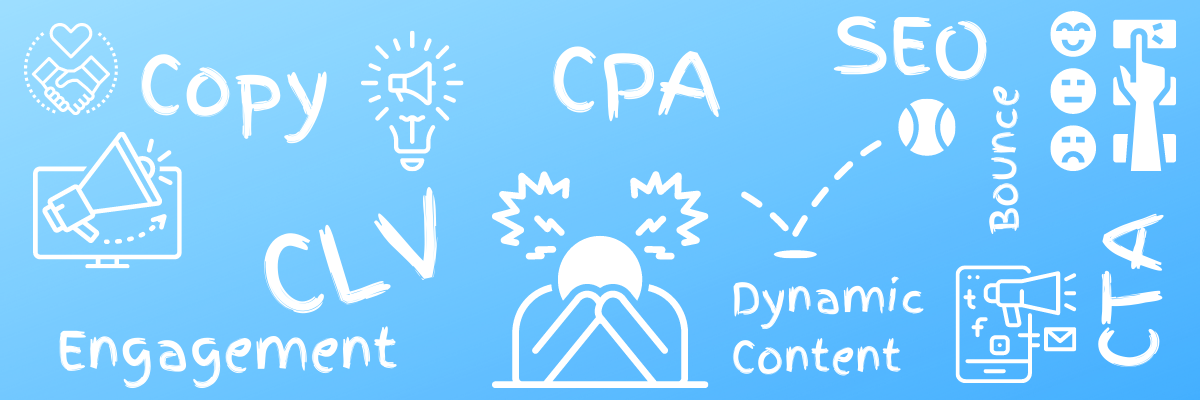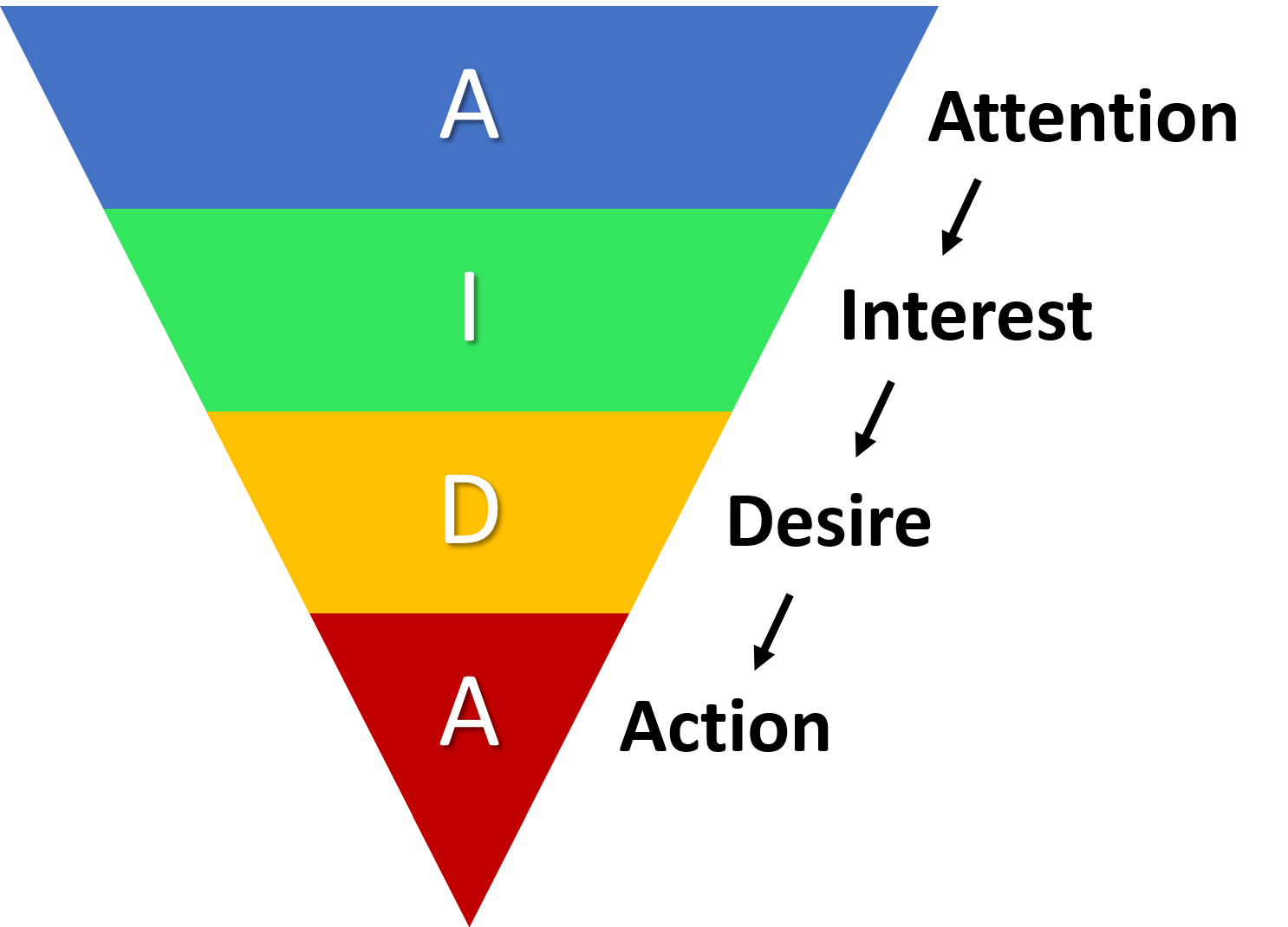
General Terms
Digital Marketing – promotion of your brand using the internet and other forms of digital communication
Buyer Persona – a fictional or general representation of your ideal client or target audience. By creating a specific persona (or series of personas) it is easier to target your messaging to appeal to them
Inbound (pull) Marketing – attracting customers to you through content and experiences that pulls them towards you because it is of interest to them
Outbound (push) Marketing – advertising and promotions where you are proactively reaching out and initiating communication with potential customers
Marketing Automation / Workflow – an automated series of communications, using technology to communicate with leads and prospects. This can be single stream flow or a multi-branch flow where their behaviour (such as opening or clicking an email) determines the next response
Contextual Marketing – an advertising model where adverts are served based on what they are looking at, terms they have searched for or browsing behaviour. The idea is that because they have expressed an interest in these topics, the user annoyance factor is lower because adverts are more relevant.
Partnership Marketing – a collaboration between 2 organisations that helps both their marketing goals. It may be as simple as a cross promotion (where they mail each other’s email lists) or a more strategic partnership or event.
Remarketing (or retargeting) is when you serve ads to people who have already visited your website. Cookies enable you to track visitors and use an advertising network, such as Google, to place ads on other websites they visit.
SEO (search engine optimisation) – is the process of improving your ranking in the ‘organic’ search listings (those not paid for). It starts with understanding what keywords you want to be found for then optimising your webpage content and also looking at ‘behind the scenes’ aspects such as links to and from your page as well as code (e.g. Is the Title of your webpage relevant).
The Customer Journey
Brand Awareness – the level of recognition of your brand in the minds of customers and potential customers
Lead – a potential customer who has expressed an interest in our product. Can be interchanged with prospect though some would say a lead is any sales contact whereas a prospect has shown more interest and is a prospective customer.
Lead Gen (or lead generation) – the process of attracting and initiating conversations with strangers to generate their interest in your brand/products/services.
Lead Nurturing – the process of developing a relationship with potential customers to help them buy from you (often through a funnel model). This may be done through a series of emails or multiple channels and involved helping get to know, like and trust you
Marketing funnel – a theoretical description of the customer journey from awareness to purchase. We go through multiple decision-making stages before we purchase and want different information at each stage. There are many different models but a popular one is AIDA – Awareness – Interest – Desire – Action which describes the process.
The top of the funnel has more people in it as there will be more people who are aware of your brand. Some will be interested, and others will drop out (narrowing the funnel). Some of those who are interested will shift into a state of desire.

Metrics
KPI (key performance indicator) – a measurable indicator that you are moving toward a desired result. E.g. Improve sales via our website would have website visitors as a kpi, but may also include time spent on site as another.
Conversion Rate – the percentage of users who have completed a desired action. For a webpage, it would be as a percentage of visitors whereas for an email it may be as a percentage of opened or delivered emails.
Engagement Rate – engagement is the interaction between users and your email / posts / website. Engagement rate is the number of interactions as a percentage of users or views (depending on the channel)
Churn rate – the rate at which customers stop doing business with you, easier to measure in subscription services where it is the number (or percentage) who don’t renew
Open Rate (email) – an open is only registered when images are downloaded or a link is clicked so it is not totally accurate. Usually given as a percentage of delivered emails.
NPS (Net Promoter Score) – measure of customer loyalty (different from CSAT). NPS scores are measured with a single question (How likely is it that you would recommend [Organisation X/Product Y/Service Z] to a friend or colleague?) and reported with a number from -100 to +100. The higher the better.
CPC (cost per click) – online advertising revenue model that websites use to charge advertisers based on the number of times visitors click on their advert
CLV (customer lifetime value) – the average revenue generated from a client over the lifetime of your relationship with them. Useful to understand how much a new customer is worth to you and how much it is worth paying to acquire them (or your CAC). If a new customer is likely to spend £1000 over the lifetime of their relationship with you, it may be worth spending more to keep them.
CTR (click thru rate) – the number of people who click through on an advert or email. Ideally you will know if the number is unique (so if a person clicks more than once they are only counted once) or aggregate.
CAC (customer acquisition cost) – a best approximation of the the money you spend to get a new customer. It may include things like: advertising costs, the salary of marketers, costs of your salespeople, etc., divided by the number of customers acquired.
CPL (cost per lead) – the amount of money it takes to generate a new prospective customer for your sales team from a marketing campaign. Can also be a pricing model in online marketing. Advertisers pay, in this case, not for a sale or a click generated by the advertising campaigns, but for a lead. Such a model is most commonly used when a direct purchase by a visitor on the website is not expected, because the product being offered needs further explanation, such as a life insurance policy.
LTV (lifetime value) – the total amount of money a customer is expected to spend in your business, or on your products, during their lifetime.
ROI (return on investment) – financial metric that is widely used to measure the probability of gaining a return from an investment, for example from a specific marketing campaign what was the return(total sales) on the investment (marketing budget)
CSAT – measure customer satisfaction. Tracks how satisfied customers are with your organisation’s products and/or services, often measured with a survey and slightly different to NPS
Bounces are email addresses that are unavailable either permanently (hard) or temporarily (soft) meaning the email cannot be delivered.
Popular Acronyms
WoM (word of mouth) – where business is generated by other consumers / partners talking about you in a positive manner and possibly referring / recommending directly.
CRM (customer relationship management) – a system used to manage your contacts, which will often contact information but also allow you to create tasks etc
CMS (Content Management System) – a computer system or application used to help you create, edit and organise content such as on a website.
CTA (call to action) – this is the next step you want your audience or reader to take after reading your email/advert/content. It may be in the form of a buy button or a find out more or download action
Other terms
A/B Testing (or split testing) – randomized experiment with two variants, A and B to determine which one performs better (could be applied to emails with different subject lines or webpage, maybe with different colour buttons)
Dynamic Content – web or email content that changes based on the behaviour, preferences or interests of the user / reader
Landing Page – a page with a single focus and purpose, usually created as part of a marketing campaign – often used to capture leads. Cold also refer to the first page you land on after clicking an advert
Keyword or Keyphrase – a word or a group of words an Internet user uses to perform a search in a search engine or search bar. Keyword marketing involves purchasing ads on the search results of that page or optimising your webpage to appear in the top of the non paid for listings.
Copy – the written words of your advert or blog that are usually trying to entertain, inform and / or persuade your audience.
More Marketing Inspiration
Power of Reflection
Reflection can be an amazing contributor to your personal development, creativity, motivation and innovation!
Creating your Customer Persona
Creating your Customer Persona is all about identifying your ideal customer. Some businesses will have one, others may have 3 or 4. Your customer persona is specific kind of segmentation that can be useful in bringing your target audience to life, helping to target messaging and offers. Follow this 5 step process to create your persona.
The number one rule in marketing
The number one rule in marketing (IMHO) has to be to put yourself in your customers shoes. Fail to do this and your marketing will not work. Do it well and you can get the product, price, message and content correct.


